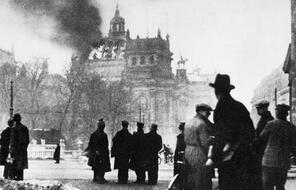The League of Nations
At a Glance
Language
English — USSubject
- History
- Human & Civil Rights
- The Holocaust
The first 26 articles of the Treaty of Versailles created the League of Nations, a new international council designed to maintain a lasting peace. All participating nations agreed to support one another against any aggressor nation. These 26 articles, also known as the Covenant of the League of Nations, include the following provisions:
Preamble
THE HIGH CONTRACTING PARTIES,
In order to promote international co-operation and to achieve international peace and security
by the acceptance of obligations not to resort to war,
by the prescription of open, just and honourable relations between nations,
by the firm establishment of the understandings of international law as the actual rule of conduct among Governments, and
by the maintenance of justice and a scrupulous respect for all treaty obligations in the dealings of organised peoples with one another,
Agree to this Covenant of the League of Nations.
ARTICLE 10.
The Members of the League undertake to respect and preserve as against external aggression the territorial integrity and existing political independence of all Members of the League. In case of any such aggression or in case of any threat or danger of such aggression the Council shall advise upon the means by which this obligation shall be fulfilled.
ARTICLE 11.
Any war or threat of war, whether immediately affecting any of the Members of the League or not, is hereby declared a matter of concern to the whole League, and the League shall take any action that may be deemed wise and effectual to safeguard the peace of nations. . . .
ARTICLE 16.
Should any Member of the League resort to war in disregard of its covenants . . . it shall ipso facto be deemed to have committed an act of war against all other Members of the League, which hereby undertake immediately to subject it to the severance of all trade or financial relations, the prohibition of all intercourse between their nations and the nationals of the covenant-breaking State, and the prevention of all financial, commercial, or personal intercourse between the nationals of the covenant-breaking State and the nationals of any other State, whether a Member of the League or not.
It shall be the duty of the Council in such case to recommend to the several Governments concerned what effective military, naval, or air force the Members of the League shall severally contribute to the armed forces to be used to protect the covenants of the League. . . . 1
Despite strenuous efforts by President Woodrow Wilson to build support in his own country, too many Americans were determined that they would never again join in a foreign war. The American Congress refused to ratify the Treaty of Versailles and to join its League of Nations.
Connection Questions
- How was the League of Nations supposed to prevent future wars?
- What actions were countries that joined the League of Nations prepared to take against aggressor nations?
- What is the significance of a major power like the United States refusing to participate in the League of Nations?
- The term sovereignty refers to the right of a country to govern itself and make its own decisions. In what ways might joining the League of Nations interfere with the sovereignty of a country?
- 1“The Versailles Treaty, June 28, 1919,” available at the Avalon Project (Yale Law School), accessed March 2, 2016.
How to Cite This Reading
Facing History & Ourselves, "The League of Nations," last updated August 2, 2016.








